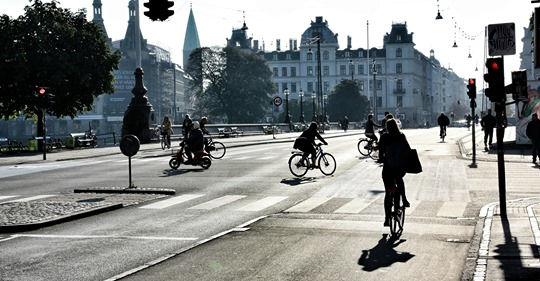Closed forever?
- Melinda Murphy
- May 17, 2020
- 2 min read
When Covid-19 cases started popping up in Colombia in mid-March, Bogota Mayor Claudia López realized her city had a head start on at least one response: car-free streets.
For years, the city had been closing its main roads to cars on Sundays as part of a weekly program called la Ciclovía, a breath of fresh air in the crowded and chaotic capital. But as the virus bore down on the city, la Ciclovía took on a more urgent value. The World Health Organization had advised that walking and cycling were the safest means of travel during the coronavirus outbreak, so López and her fellow city officials decided to effectively scale up la Cicovía as an emergency pandemic mitigation measure.
Within days, Bogotá opened nearly 47 miles of new temporary bike routes, adding to 340 miles of paved protected paths, and converted almost 17 miles of automobile lanes to bike routes overnight.
It was an example of the coronavirus crisis leading to rapid changes that are transforming the way we think about using urban space. Suddenly cities are being forced to optimize how they use their finite square footage, with results that are offering a glimpse of exactly how much potential those spaces have.
Among the most visible of these changes — and the ones that may be most likely to become permanent — are the handovers of city streets from private vehicles to pedestrians and cyclists. In thousands of cities in towns, from Portland to Berlin, streets are being closed to vehicular traffic and reclaimed, in the name of public health, by two-wheeled and two-footed humans. The question is, once the health crisis subsides, will these changes remain in place? As London’s walking and cycling commissioner Will Norman put it last week: “We need to come out of this crisis in a radically different way.”
A new urban paradigm
In recent years, Paris has been on the cutting edge of the car-free streets movement, with a visionary mayor that has made pedestrianization of the city one of her calling cards.
As we speak, the city is creating 650 kilometers of pop-up “corona cycleways” for travel once the lockdown ends and converting one of its major central roads, the Rue di Rivoli, into a bicycle route. Mayor Anne Hidalgo has said that changes deemed successful will be made permanent, folded into the city’s ongoing mobility plan.
What’s more, France’s Minister of Ecological Transition announced that, going forward, every French citizen will be entitled to free bicycle repairs of up to 50 euros ($55 USD) from a network of 3,000 mechanics who will be reimbursed by the government. The $22 million plan will also fund permanent bike racks, cycling classes and support for cities to build more cycle lanes.
“I am willing (and rather confident) to see these temporary measures become permanent because, pandemic or not, cycling is one of the cleanest and healthiest ways to move, especially in urban areas,” said Pierre Serne, president of cycling association Club des Villes et Territoires Cyclables, which is working with the French government to implement the plans.





Comments